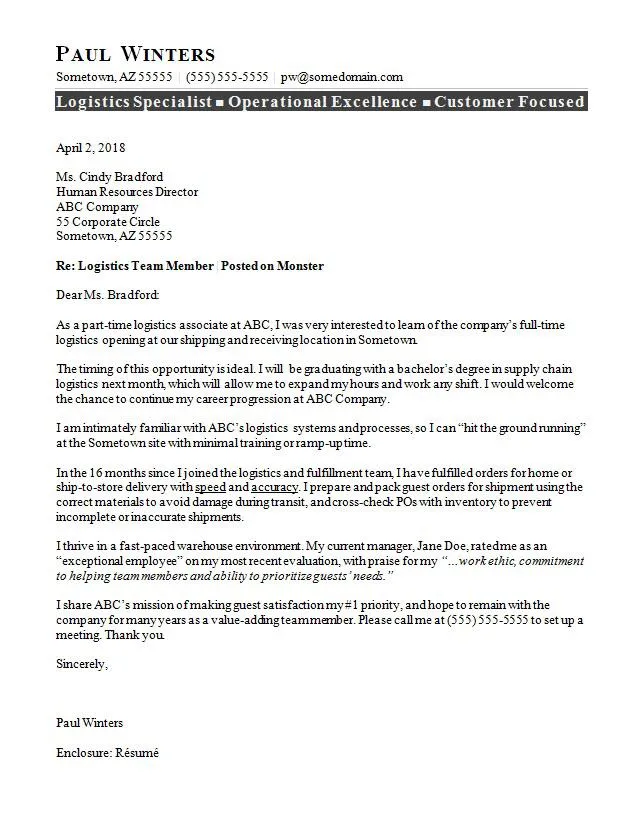Understanding the Logistics Cover Letter
A logistics cover letter is a crucial document that accompanies your resume when applying for jobs in the logistics and supply chain industry. It serves as your introduction to a potential employer, offering a concise overview of your qualifications, skills, and experience. Unlike a resume, which provides a factual account of your background, a cover letter allows you to express your personality, enthusiasm, and suitability for the specific role. It’s your chance to make a strong first impression and persuade the hiring manager to consider you for an interview. This guide will help you craft a compelling cover letter that effectively showcases your expertise and increases your chances of landing your dream job in logistics.
Why a Logistics Cover Letter Is Important
In the competitive field of logistics, a well-written cover letter can be the deciding factor in whether your application stands out. It provides context to your resume, explaining how your skills and experience align with the job requirements. It allows you to highlight specific achievements, demonstrate your understanding of the company, and express your genuine interest in the position. Furthermore, a cover letter showcases your communication skills, attention to detail, and professionalism, all of which are highly valued in logistics roles. Without a cover letter, your application may seem incomplete, and you risk missing the opportunity to make a strong case for why you’re the best candidate.
Key Components of a Logistics Cover Letter
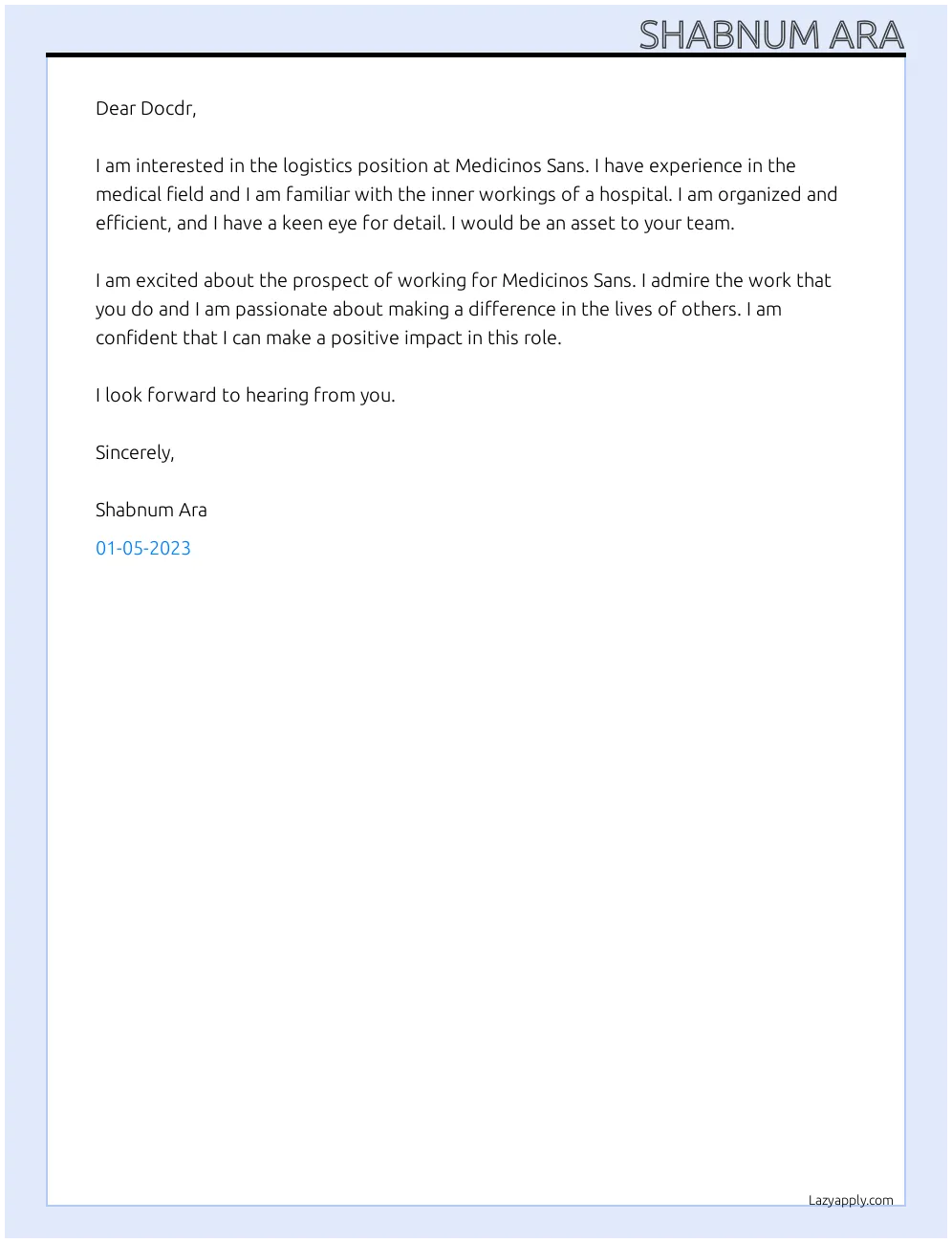
A successful logistics cover letter comprises several key sections, each with a specific purpose. Understanding these components is essential for creating a persuasive and impactful document.
Header Section
The header section includes your contact information and the recipient’s details. This ensures that the employer can easily reach you and that the letter is properly addressed. Start with your name, address, phone number, and email address. Then, include the date and the hiring manager’s name, title, and company address (if available). Using a professional format for the header shows attention to detail and respect for the recipient.
Personal Information
Your personal information should be clearly displayed at the top of the letter. Include your full name, address, phone number, and professional email address. Make sure your email address is professional and appropriate for job applications. This section makes it easy for the employer to contact you if they wish to proceed with your application.
Date
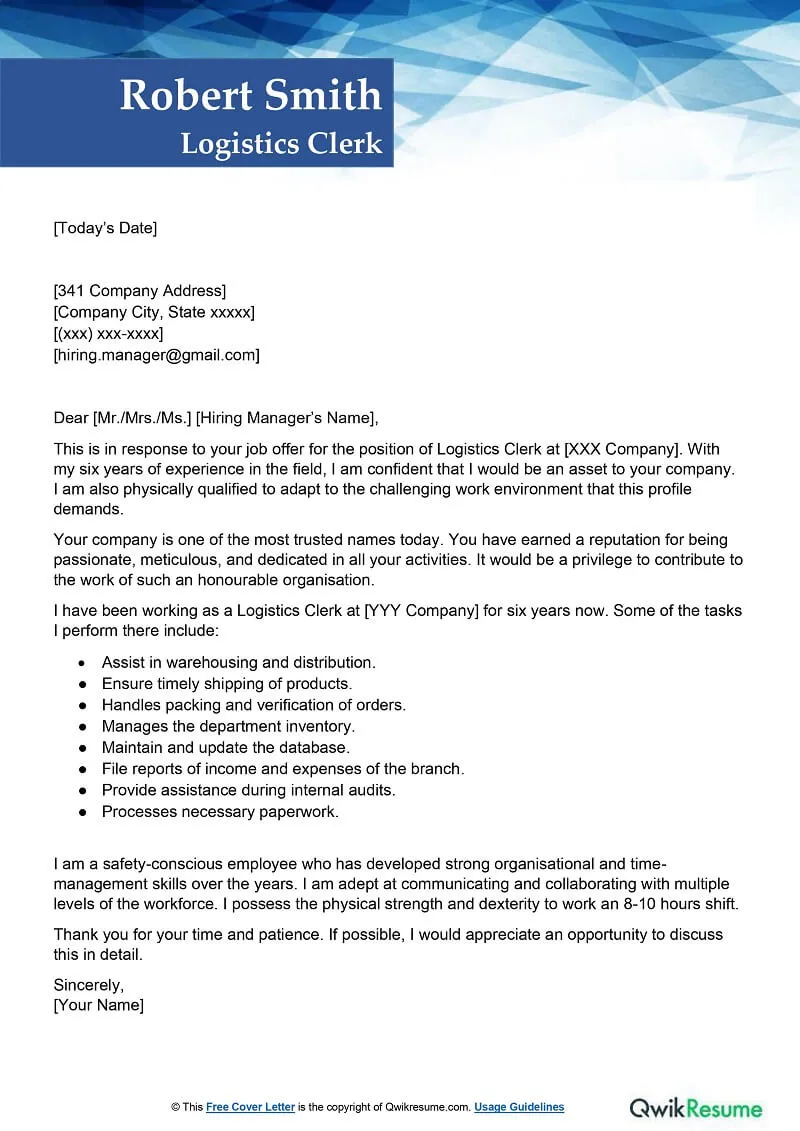
The date is placed beneath your personal information. It indicates when the cover letter was written and is essential for record-keeping purposes. The date should align with the current date when you are submitting your application.
Recipient’s Information
This section includes the name of the hiring manager, their job title, and the company’s address. Addressing the cover letter to a specific person is highly recommended, as it shows you’ve done your research and are genuinely interested in the position. If you are unable to find the hiring manager’s name, use a general salutation such as “Dear Hiring Manager.”
Body Section
The body of your cover letter is where you make your case. It should be well-structured, concise, and tailored to the specific job you’re applying for. The body is the core of your cover letter, where you articulate your skills, experience, and enthusiasm. Start with a compelling opening, highlight your key skills, quantify your achievements, demonstrate your passion, and conclude with a strong call to action.
Opening Paragraph
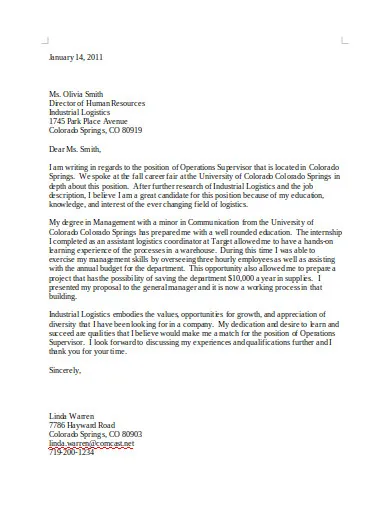
Your opening paragraph should immediately grab the reader’s attention and state your purpose. Mention the specific position you’re applying for and where you found the job posting. Briefly introduce yourself and highlight your most relevant skill or experience that aligns with the job requirements. The goal is to create a positive first impression and make the hiring manager want to read further. For example, “I am writing to express my keen interest in the Logistics Coordinator position advertised on [Platform]. With over [Number] years of experience in supply chain management, I am confident I possess the skills and dedication to excel in this role.”
Highlighting Relevant Skills
The middle paragraphs should focus on highlighting your key skills and how they relate to the job requirements. Review the job description carefully and identify the skills and qualifications the employer is seeking. Then, provide specific examples of how you’ve demonstrated those skills in previous roles. Use action verbs to describe your accomplishments and quantify your achievements whenever possible. Focus on skills such as inventory management, transportation, warehousing, supply chain optimization, and problem-solving. Be specific and provide concrete examples to support your claims. For instance, “In my previous role at [Company], I successfully streamlined the inventory management process, reducing storage costs by 15% and improving order fulfillment efficiency.”
Quantifying Achievements
Whenever possible, quantify your achievements with numbers and data. This helps the hiring manager understand the impact you’ve made in previous roles and demonstrates your ability to deliver results. Use metrics such as percentages, dollar amounts, and time savings to showcase your accomplishments. For example, instead of saying “Improved efficiency,” say “Increased warehouse efficiency by 20% through the implementation of a new inventory tracking system.” This makes your achievements more tangible and impressive.
Demonstrating Passion for Logistics
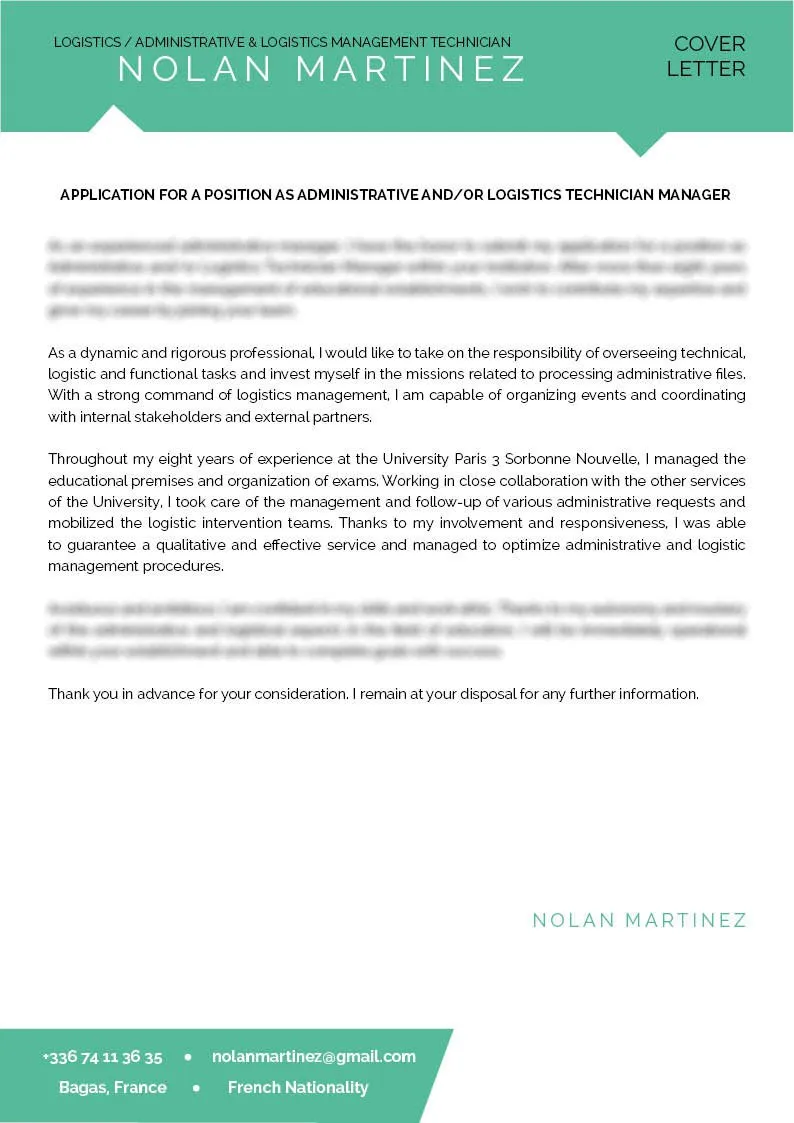
Show your enthusiasm for the logistics field and the specific company you’re applying to. Research the company and understand its mission, values, and recent projects. Mention why you’re interested in working for them and how your skills and experience align with their goals. This demonstrates that you’ve done your homework and are genuinely interested in the opportunity. For example, “I am particularly drawn to [Company]’s commitment to [Company Value] and believe my experience in [Specific Skill] aligns perfectly with your focus on [Company Goal].”
Closing Paragraph
Your closing paragraph should reiterate your interest in the position and thank the hiring manager for their time and consideration. Briefly summarize your key qualifications and express your confidence in your ability to contribute to the company’s success. Be polite and professional, and avoid sounding overly eager or demanding. Make sure to proofread your letter for any errors or typos before submitting it. A strong closing leaves the reader with a positive impression and encourages them to consider your application.
Call to Action
End your cover letter with a clear call to action. Indicate that you’re eager to discuss your qualifications further and that you look forward to the opportunity to interview. Include a statement like, “Thank you for considering my application. I am eager to learn more about this opportunity and discuss how my skills and experience can benefit your team. I look forward to hearing from you soon.” Be sure to provide your contact information once more, making it easy for the hiring manager to reach you.
Formatting and Presentation Tips
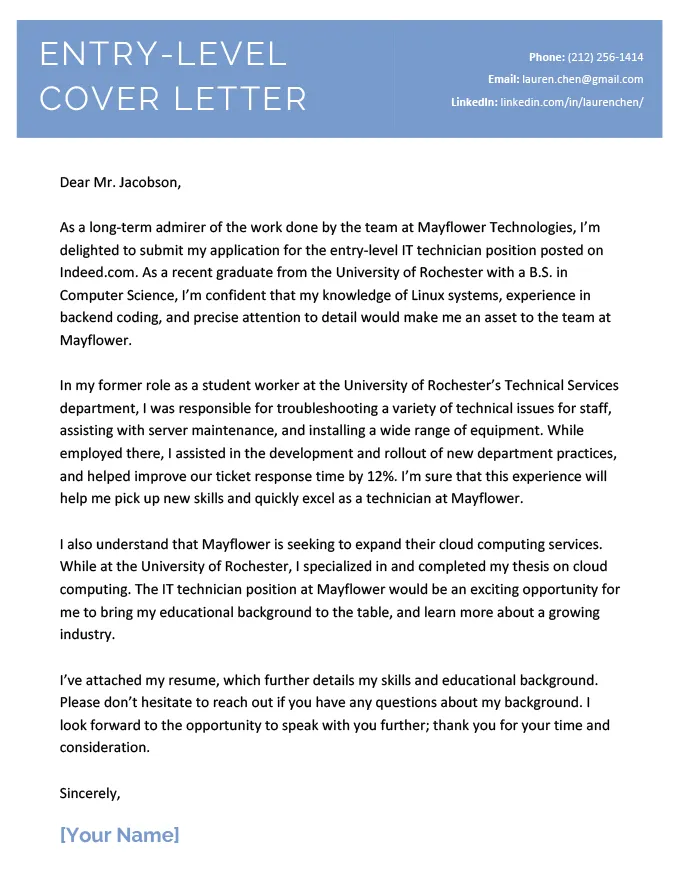
The appearance of your cover letter is just as important as its content. Proper formatting and presentation make your letter easy to read and demonstrate your attention to detail. Here are some key formatting tips to follow:
Font Selection
Choose a professional and easy-to-read font. Common fonts like Times New Roman, Arial, and Calibri are all good options. Ensure the font size is between 10 and 12 points for readability. Avoid using overly stylized or unusual fonts, as they can distract from the content of your letter. The goal is to create a clean and professional document that’s easy on the eyes.
Font Size
Use a font size that is easy to read. A size between 10 and 12 points is generally recommended. This makes the text comfortable to view without being too large or too small. Ensure consistency throughout your cover letter to maintain a professional appearance.
Margins and Spacing

Use standard one-inch margins on all sides of your cover letter. This creates a balanced look and allows for ample white space, making the document more readable. Use single-spacing within paragraphs and double-spacing between paragraphs. This spacing helps to separate different sections of your letter and makes it easy for the reader to follow your train of thought. Proper spacing also prevents your cover letter from appearing cluttered.
Proofreading and Editing
Proofread your cover letter carefully for any errors in grammar, spelling, and punctuation. Errors can undermine your credibility and make a negative impression. Use spell-check and grammar-check tools, but don’t rely on them entirely. Read your letter aloud to catch any awkward phrasing or sentences that don’t flow well. Ask a friend or family member to review your letter for a fresh perspective. Proofreading ensures that your cover letter is polished, professional, and free of errors. This demonstrates your attention to detail and professionalism.
Sample Logistics Cover Letter
Here’s a sample logistics cover letter to guide your writing process. Remember to customize this sample to reflect your own skills, experience, and the specific job requirements. Adapt the content to reflect your unique qualifications and the specific needs of the employer. Use this as a template, but ensure your letter is original and tailored to each application. Keep in mind that originality and personalization are key to making a strong impression.
Analyzing the Sample Cover Letter
Analyze the sample cover letter to understand how the various elements are combined to create a compelling narrative. Pay attention to the structure, language, and tone. Notice how the skills and achievements are presented to align with the job description. Observe how the letter expresses enthusiasm for the role and the company. By analyzing this sample, you will gain a better understanding of how to structure and write your own logistics cover letter effectively.
Adapting the Sample to Your Experience
The sample cover letter should serve as a template, not a rigid model. Customize it to reflect your unique background and the specific job you’re applying for. Replace the generic examples with your own accomplishments and tailor the language to match your individual skills and experience. Make sure your cover letter is genuine, showcasing your personality and expertise. This will help your application stand out. Tailoring your cover letter demonstrates your attention to detail and commitment to the role.
Common Mistakes to Avoid
There are several common mistakes that can undermine the effectiveness of your cover letter. Avoiding these errors will greatly improve your chances of success. Here’s what to watch out for:
Grammatical Errors
Grammatical errors, typos, and spelling mistakes can damage your credibility. They indicate a lack of attention to detail and professionalism. Always proofread your cover letter carefully and use spell-check and grammar-check tools. Having a friend or family member review your letter can also help catch errors you might miss. A polished, error-free cover letter shows that you are careful and committed to quality.
Generic Language
Avoid using generic, cookie-cutter language that could apply to any job. Customize your cover letter to the specific requirements of the position and the company you’re applying to. Use specific examples and quantify your achievements to demonstrate your value. A generic letter suggests a lack of genuine interest in the role, so make sure your cover letter reflects your unique skills and enthusiasm for the job.
Lack of Customization
Failing to customize your cover letter to each job is a common mistake. Always tailor your letter to the specific requirements of the position and the company. Research the company and the hiring manager to understand their needs and expectations. Show how your skills and experience align with their goals. Customizing your cover letter demonstrates your genuine interest and attention to detail, which will make your application stand out.
Tailoring Your Cover Letter
Tailoring your cover letter to each job is crucial for showcasing your value and increasing your chances of getting an interview. It shows the employer that you’ve taken the time to understand their specific needs and that you’re a good fit for their organization. Here’s how to tailor your cover letter effectively.
Researching the Company
Before writing your cover letter, research the company to understand its mission, values, and recent activities. Visit the company website, read news articles, and check their social media presence. This will help you tailor your letter to show how your skills and experience align with their goals and demonstrate your genuine interest in the company. Showing that you know about the company is a great way to impress the hiring manager. This research will also help you identify the company’s specific needs and tailor your skills to those requirements.
Matching Skills to Job Requirements
Carefully review the job description and identify the key skills and qualifications the employer is seeking. Then, highlight your relevant skills and provide specific examples of how you’ve demonstrated those skills in previous roles. Use the same keywords and phrases from the job description in your cover letter to show that you’re a good match. Clearly demonstrating your abilities gives the hiring manager confidence in your application.
Keywords Integration
Incorporate relevant keywords from the job description into your cover letter. Applicant Tracking Systems (ATS) often scan cover letters for keywords, so using them can help your application get noticed. However, don’t stuff your letter with keywords; use them naturally within the context of your sentences. Keywords ensure your cover letter matches what the company is looking for. This is a critical step in the application process, helping your application be seen by human eyes.
Final Review and Submission
Before submitting your cover letter, review it carefully to ensure it’s free of errors and tailored to the specific job. Proofread for grammatical errors, spelling mistakes, and typos. Make sure your contact information is accurate and up-to-date. Ensure that you’ve addressed the letter to the correct person. After this review, send the letter and submit your application. Always verify all requirements. Remember to follow any application instructions precisely. Good luck with your job search!
